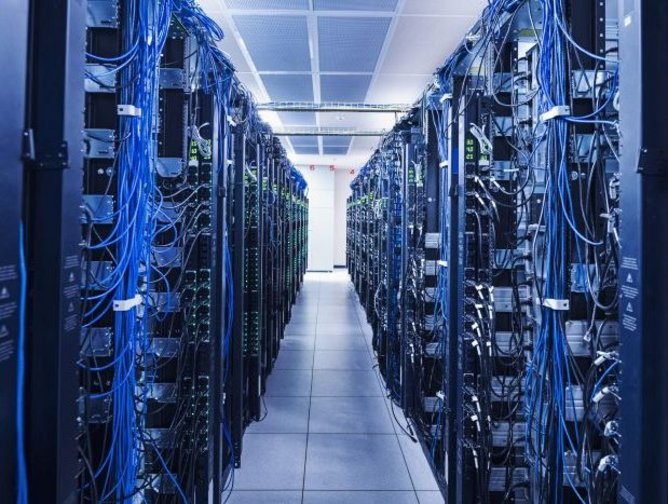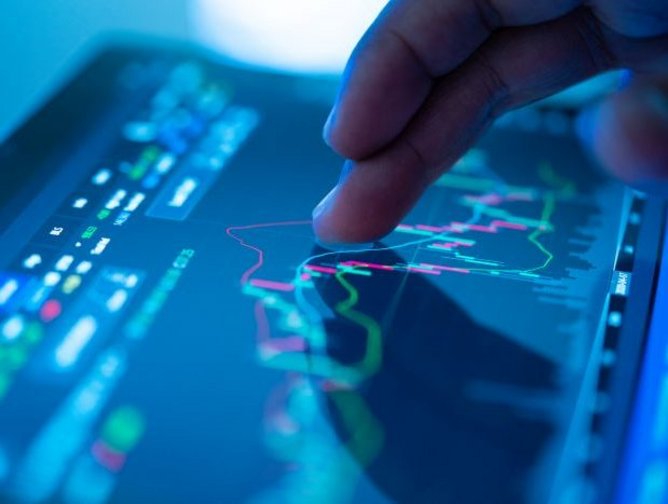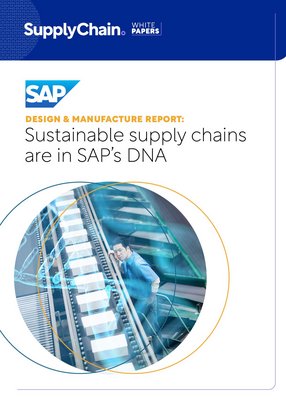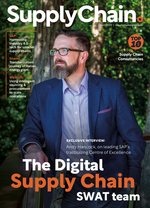For some time, sustainability has been gaining traction as a corporate aspiration. But following COP26 in 2021 the drive towards net zero carbon emissions by 2050 was enshrined in law by most nations in the developed world, so making sustainability a mission critical business goal.
At the sharp end, helping make today’s businesses more sustainable, is SAP.
SAP has made sustainability integral to its solutions, so that businesses can think green and behave green, from one end of the supply chain to the other.
“The supply chain encompasses every part of the process, all the way from design and manufacture to planning, logistics and asset and service management,” says Martin Barkman Senior Vice President, Global Head of Solution Management, Digital Supply Chain at SAP. “Each of these not only has a direct impact on sustainability but also they’re inter-related.”
This is why SAP solutions are designed to work at every stage of a product’s life cycle - from how it is conceived to how it is recycled.
Sustainable supply chains, from design to operation
Barkman says that on sustainability, SAP solutions can be categorised broadly as enablers of:
- The drive toward lower or zero emissions
- The drive towards zero waste
- The drive towards a circular economy
- The drive towards zero inequality
Barkman and his global team help businesses across all sectors worldwide keep sustainability top of mind every step of the way, from product concept to product consumption; and to re-use as part of the circular economy.
SAP does this by making sustainability a focus in how products are designed, manufactured, moved, and used.
“If you think about how a product is going to be manufactured when you design it, then that's a much better and more holistic approach,” says Barkman. A properly designed product will impact how sustainably that product can be manufactured.”
Not just how it is manufactured, either, Barkman reminds us, but also how a product is distributed, used, and recycled. “Design can impact the cost of logistics, and ultimately also how the customer experiences the product, and how that product is recycled, reused, or returned to the earth,” he adds.
How SAP is able to bring together the stages of design, planning, production, distribution and operation - and digitalise those processes and allow them to operate continuously with each other - “is particularly interesting to me,” Barkman says.
He adds: “For example, when you design a product, how do you design with sustainability and the circular economy in mind? You have to think about whether the raw materials can be reused, or at least if they are biodegradable?
“Then, when it comes to manufacturing, you want to know you’re making it in the right place - that you're not generating too many emissions by transporting the raw material Are you generating too much waste in the manufacturing process, and ensuring the health and safety of the workforce?.”
Overcoming the challenges of sustainability in manufacturing
The manufacturing process also poses sustainability challenges, says Barkman: “You have to be smart about keeping equipment properly maintained and serviced, so that you’re not constantly replacing and disposing of components. The aim is to extend the life of all of your supply chain assets.”
He adds: “It can get complex, which is why SAP solutions are absolutely geared to helping companies navigate through all of this, to make sure they’re always headed in the right direction.”
On the ground, SAP solutions help businesses make sustainable decisions in a practical and profitable ways.
SAP has software that allows companies to design and produce products in an environmentally responsible way, by helping them manage exactly what needs to be in any given product’s bill of material.
“A business may need to make a change to a product’s bill of material,” says Barkman. “We can help them make that change at the design stage, and then translate this into a bill of material for the various manufacturing steps. If a business can do this digitally, more or less on an ongoing basis, then that’s going to drive both productivity, profitability, and sustainability to a whole new level.”
Other SAP solutions are allowing companies to take carbon-emissions tracking to the next level, says Barkman.
“We have software applications that allow companies to manage the environment, health and sustainability of their operation in the best possible way,” he explains. We're bringing sustainability KPIs into our applications.”
Grand ambitions around sustainability can be a challenge
When it comes to embedding sustainability into company-wide processes surely there are challenges? Changing regulations from country to country, for example.
“Of course, we want to ensure our customers have the right tools, processes, and systems to be in compliance with regulations,” says Barkman. “But in some ways, it’s gone way beyond regulations. The journey into sustainability kind of began with that base level of regulations, and these don’t really change.”
Now, he says, the real challenge is more about keeping up with customers’ ever-more ambitious sustainability goals, while maintaining profitability.
“The United Nations has set some pretty top-level sustainability goals, and many of the businesses we meet have rigorous aspirations and goals for how they want to operate, and how they want to help lead us towards a more sustainable world. I’d say that the real challenge is how we lead these companies towards those noble, but high-level, goals.”
Sustainability is complex, rewarding work for SAP, but Barkman says the tech that underpins its solutions has a paradoxical tinge. He cites the pandemic e-commerce boom, which has seen a global shift away from in-store purchases to omnichannel-driven e-commerce.
“The technologies that are helping drive us towards sustainability are the same ones that are enabling consumers to behave in ways that aren’t so sustainable,” he says.
“People sitting at home ordering one thing after another to be shipped to their doorstep in a way that involves multiple journeys is not the most sustainable way to do things.”
He adds: “The pandemic changed many things for consumer packaged goods companies and of course retailers, and the key question now is whether we are going to continue buying the products online at the same rate, or if that will change, like it was showing signs of doing prior to the pandemic.”
Outside of e-commerce, Barkman says there are other factors posing sustainability challenges.
“Different industries are facing many different challenges these days, of which sustainability is but one thrown into the mix. The ultimate aspiration is creating resilient customer-centric and sustainable supply chains. I think different industries and sectors will take different routes and paths towards this.”
Net zero is changing the way businesses see themselves
Beyond the paradox of technology, there are other philosophical elements to the global drive towards net zero, says Barkman - namely, the way sustainability is changing how companies view themselves.
“There was a time when the only school of business thought was that companies exist for the sole and exclusive purpose of driving value for shareholders,” he says. Economics and sustainability have usually been at odds, admits Barkman, but adds that he is now seeing a “coming together” on this front. He says that this most often manifests in corporate goals and mission statements coupled with real innovation that is profitable because it facilitates sustainability. Consumers and customers will expect it, and so that is how sustainability in the end leads to shareholder value.
“Increasingly, these are not limiting what corporations are setting out to do,” he says. “Businesses are still taking care of stakeholders but by driving strategy that in part has a vector specifically aimed at around sustainability. In fact, investors are putting their money into companies that can show that they are both sustainable and profitable.”
While businesses are undoubtedly moving towards their net zero goals, are they being pushed by the court of public opinion into doing so at a rate that will prove unsustainable for many?
“Sustainability is an area of innovation,” he says. “As such it’s going to draw new investment and new areas of focus. There will be some amazing successes, and there’ll be those who struggle and perhaps those who fail. That is expected.”
He adds: That's actually a sign of something positive happening. That means risk is being taken. Things are being tried. It shows that businesses are stretching the limits of their imagination and capabilities, and in many cases, the failures will provide the largest source of continuous learning.”
As for the biggest barrier to sustainability, Barkman feels this is “information, collaboration and visibility”.
“These are the priorities,” he says. “Companies want to go on this journey but what they find difficult is how to get started in a meaningful way? How do you do something with all this information?”
He adds: “In many cases, people will know what should be done, but putting this into action can make them feel like they’re stuck in the starting blocks. But once they start working around visibility across the end-to-end supply chain, it soon becomes clear that it’s data where you begin.”
But the need for businesses to embark on sustainability transformation programmes will only ever grow more pressing, says Barkman.
“Consumers want the companies, products or services they purchase and interact with to be sustainable,” he says. “Increasingly the products people purchase are being looked at through the lens of sustainability. I see a lot of companies making this central to what their value proposition is, as they are driving innovation. At the end of the day, businesses want to feel good about what they do and how they do it. We can help them with this.”






